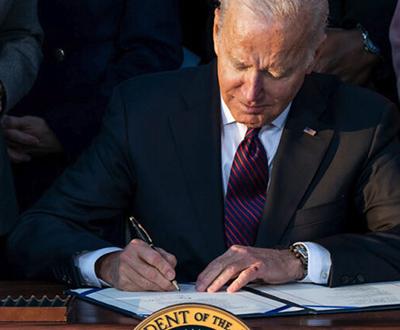
A new Gallup poll released on Dr. Martin Luther King Jr. Day revealed that Americans’ political party preferences dramatically shifted by the end of 2021 from a nine-point Democratic advantage to a five-point Republican edge.
By Stacy M. Brown, NNPA Newswire Senior National Correspondent@StacyBrownMedia
With President Joe Biden’s tanking approval rating and the failure by Democrats to push through vital legislation, political preferences in the United States have taken a shift.
A new Gallup poll released on Dr. Martin Luther King Jr. Day revealed that Americans’ political party preferences dramatically shifted by the end of 2021 from a nine-point Democratic advantage to a five-point Republican edge.
Further, 2021 saw the most significant percentage of U.S. adults identify as political independents.
Gallup asked all Americans it interviewed whether they identify politically as a Republican, a Democrat, or an independent. Researchers asked Independents whether they lean more toward the Republican or Democratic Party.
According to Gallup, the combined percentage of party identifiers and leaners measures the relative strength of the two parties politically.
The nine-point Democratic advantage in the first quarter and the five-point Republican edge in the fourth quarter are among the largest Gallup has measured for each party in any quarter since it began regularly measuring party identification and leaning in 1991.
The poll found:
- The Democratic lead in the first quarter was the largest for the party since the fourth quarter of 2012 when Democrats also had a nine-point advantage.
- Democrats held more considerable, double-digit advantages in isolated quarters between 1992 and 1999 and nearly continuously between mid-2006 and early 2009.
- Republicans held as much as a five-point advantage in a total of only four quarters since 1991.
- The GOP last held a five-point advantage in party identification and leaning in early 1995, after winning control of the House of Representatives for the first time since the 1950s.
The report continued:
“Republicans had a larger advantage only in the first quarter of 1991, after the U.S. victory in the Persian Gulf War led by then-President George H.W. Bush.”
Further, Gallup researchers noted that “shifting party preferences in 2021 are likely tied to changes in popularity of the two men who served as president during the year.”
Republican Donald Trump finished out his single term after being defeated in the 2020 election, with a 34% job approval rating, the lowest of his term.
“His popularity fell more than 10 points from Election Day 2020 as the country’s COVID-19 infections, and deaths reached then-record highs, he refused to acknowledge the result of the election, and his supporters rioted at the U.S. Capitol on Jan. 6, 2021, in an attempt to prevent Congress from counting the 2020 Electoral College votes,” Gallup noted.
Democrat Joe Biden enjoyed relatively high ratings after taking office on Jan. 20. His approval stayed high through the early summer as COVID-19 infections dramatically decreased after millions of Americans were vaccinated against the disease.
“A summer surge of infections tied to the delta variant of the coronavirus made it clear the pandemic was not over in the U.S., and Biden’s approval ratings began to sag. Later, the chaotic U.S. withdrawal from Afghanistan caused Biden’s ratings to fall further into the low 40s. His ratings remain low as the U.S. battles rising inflation and yet another surge of COVID-19 infections, tied to the omicron variant of the virus.”
With Trump’s approval rating at a low point and Biden relatively popular in the first quarter, 49% of Americans identified as Democrats or leaned Democratic, compared with 40% who were Republicans or Republican leaners.
Democratic affiliation stayed high in the second quarter, while Republican association began to recover, increasing to 43%.
The third quarter saw a decline in Democratic identification and leaning, from 49% to 45%, as Biden’s ratings began to falter, while there was no meaningful change in Republican affiliation.
Gallup reported that in the fourth quarter, party support flipped as Republicans made gains, from 44% to 47%, and Democratic affiliation fell from 45% to 42%.
“These fourth-quarter shifts coincided with strong GOP performances in 2021 elections, including a Republican victory in the Virginia gubernatorial election and a near-upset of the Democratic incumbent governor in New Jersey. Biden won both states by double digits in the 2020 election.”
Gallup concluded:
“The GOP advantage may be starting to ease, however, as Gallup’s latest monthly estimate, from December, showed the two parties about even — 46% Republican/Republican-leaning and 44% Democratic/Democratic-leaning.”


Be the first to comment